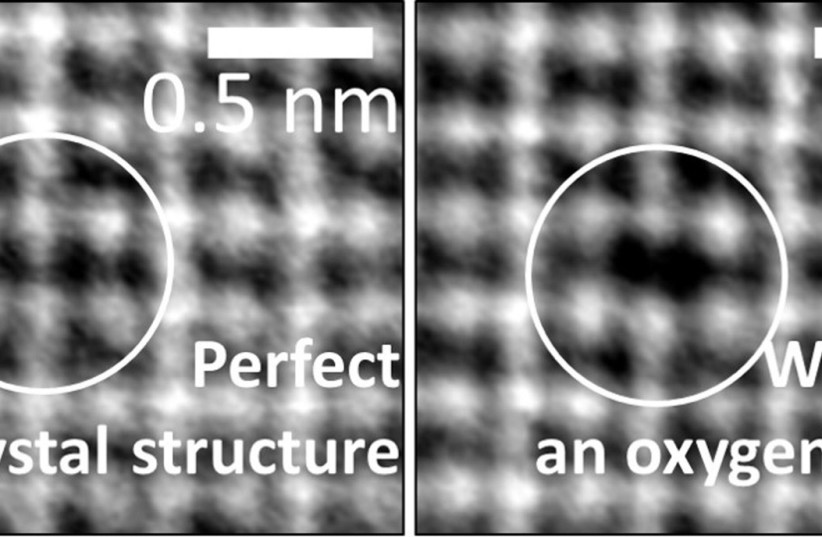A research team at Israel’s Technion – Israel Institute of Technology – the preeminent research institution in Israel – has succeeded in changing a material’s electrical properties by vacating a single oxygen atom from the original structure.
The study, which was published in the peer-reviewed scientific journal ACS Nano, shares findings that are a potential breakthrough in the study and development of ferroelectric materials. Ferroelectric materials, such as barium titanate and Rochelle salt, are characterized by a strong correlation between their atomic structure and electrical and mechanical properties. They are critical to the development of electronic devices.
Researchers used barium titanate, the atoms of which form a cubic-like lattice structure, for the study. In ferroelectric materials, a unique phenomenon occurs: titanium atoms draw away from oxygen atoms, as titanium is positively charged and oxygen is negatively charged.
A cubic lattice has six faces, so the charged atoms move into one of six possibilities. In different parts of the material, a large number of neighboring atoms shift in the same direction, and polarization in each such area – known as ferroelectric domains – is standard and uniform. Traditional technologies are based on the electric field created in those domains.

In recent years, however, a great deal of effort has been directed at minimizing the device size and using the borders, or walls, between the domains rather than the domains themselves.
The research community has remained divided in opinion as to what happens in the two-dimensional world of the domain walls: How is the border between two domains with different electric polarization stabilized? Is the polarization in domain walls different from that in the domains themselves? Can the properties of the domain wall be controlled in a localized manner?
While ferroelectric materials are great at conducting electricity, the domain walls form a two-dimensional object that is controllable at the will of scientists. This phenomenon encompasses the potential to significantly reduce energy consumption in data storage and data processing devices.
Researchers eventually succeeded in inducing through engineering an individual oxygen atom vacancy and demonstrated that this action creates opposing dipoles and greater electric symmetry – a unique topological structure called a quadrupole.
The findings demonstrated that engineering an oxygen atom vacancy has a great impact on the electrical properties of the material – not only at the atomic scale, but also at the scale that is relevant to electronic devices, for example, in terms of electrical conductivity. The findings will aid in reducing the energy consumption of electronic devices.
